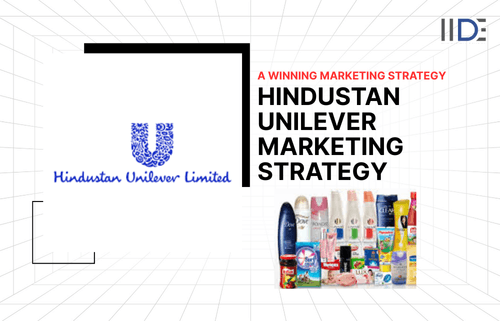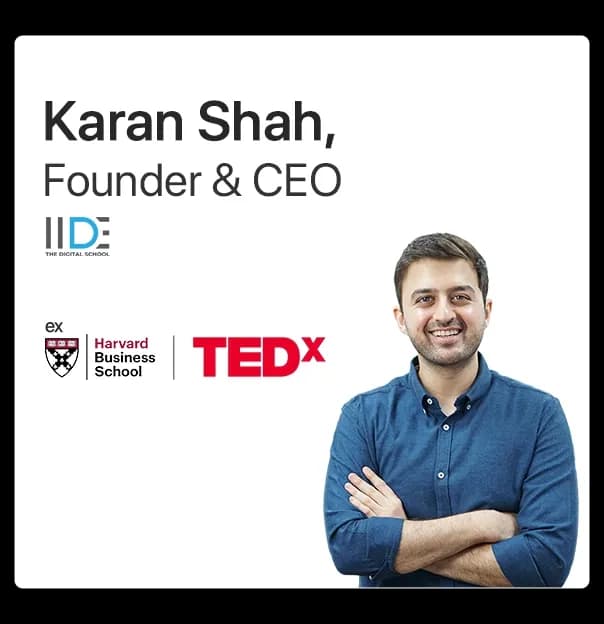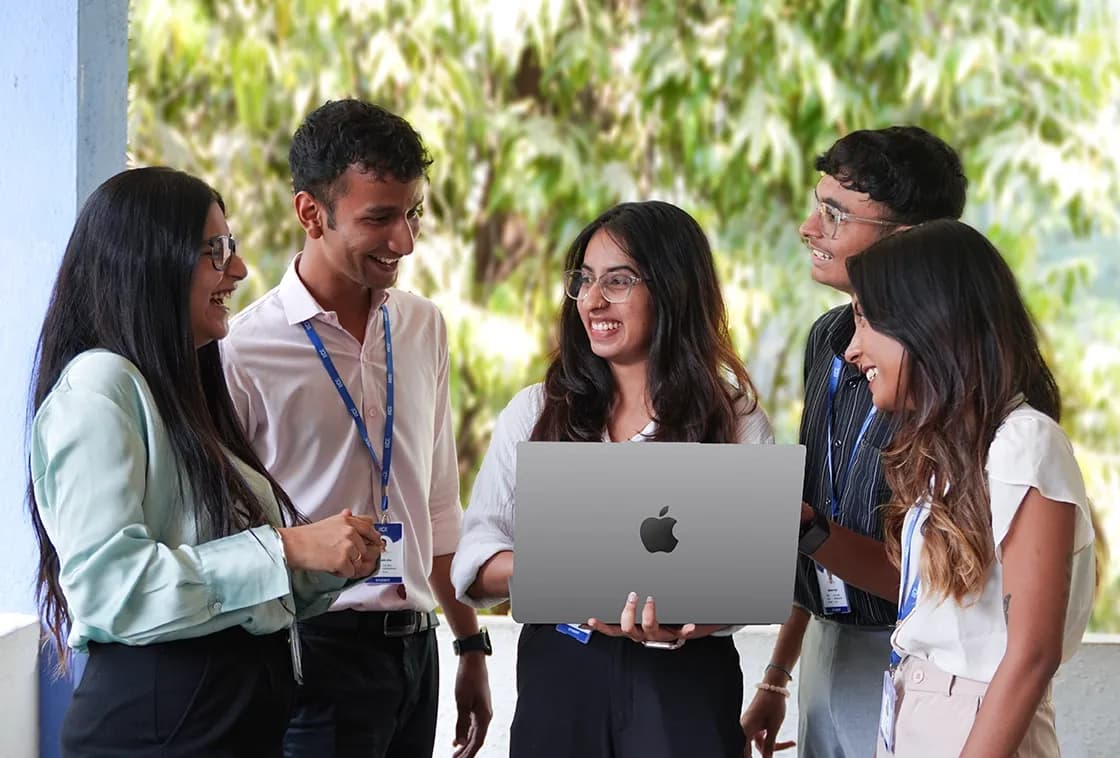Decode how AI is reshaping careers in 2026 with our Head of AI Programs in a LIVE online session. Register Now.

Updated on Dec 12, 2025
Share on:
Hindustan Unilever (HUL) is one of India’s largest FMCG companies, trusted for brands like Dove, Surf Excel, Lakme, and Horlicks. Its marketing strategy is a seamlessly integrated approach that combines targeted digital outreach, including SEO, influencer partnerships, and precision-led Google and Facebook Ads, with a strong omnichannel retail presence to ensure accessibility and convenience.
At its core, HUL focuses on empowering parents with trusted expert knowledge and solutions, positioning itself as a reliable partner in nurturing their family’s health and wellness. With over 40% of ad spends on digital media, HUL uses social-first campaigns and quick commerce platforms to stay relevant, while its offline network ensures nationwide availability.
Before diving into the marketing strategy of Hindustan Unilever, I’d like to inform you that the research and initial analysis for this piece were conducted by Harsh Tannu, a student of IIDE’s Digital Marketing Program (March 2025 Batch).
If you found this case study insightful, feel free to reach out to Harsh to share your appreciation for his research!
About Hindustan Unilever
Founded in 1931, HUL is India’s largest FMCG company and a subsidiary of Unilever. Its portfolio spans beauty, home care, food & beverages, and wellness, serving over 700 million Indians every month.
HUL owns iconic brands like Surf Excel, Dove, Lakme, Knorr, Pepsodent, Vaseline, and Horlicks. In 2025, under the leadership of CEO Priya Nair, HUL is positioning itself as a digitally advanced, sustainable, and consumer-first company.


Learn Digital Marketing for FREE


Marketing Objectives & Business Challenges
Despite being India’s FMCG leader, Hindustan Unilever faces unique hurdles in 2025. The company operates in a highly competitive market, with rivals such as P&G, ITC, and Patanjali vying for the same consumer trust.
The challenges include portfolio clutter with too many SKUs, making it difficult to maintain brand focus, and an overdependence on traditional FMCG markets, which slows down growth in premium beauty and wellness segments. HUL also continues to navigate the fallout from past controversies, such as the backlash over Glow & Lovely and environmental criticisms, which impact brand credibility.
At the same time, changing consumer preferences demand digital-first, authentic engagement rather than mass advertising. This shift requires HUL to adapt quickly with social-first campaigns, influencer collaborations, and innovative product launches.
HUL’s clear objective is to rebuild trust and future-proof its portfolio. It aims to strengthen its presence in premium and wellness markets, scale up phygital marketing experiences, and ensure sustainable growth while staying relevant to Gen Z and millennial audiences.
Buyers Persona:

Palak Gupta
Tier-1 & Tier-2 cities across India
Occupation: Working Profession
Age: 25-45 years old
Motivations
- Wants everyday products that are premium feeling but still affordable
- Prefers brands that are socially responsible and sustainable (e.g. eco-friendly practices, trustworthy ingredients)
Interests & Hobbies
- Watches short videos, beauty & wellness content on Instagram and YouTube
- Follows cooking shows, wellness trends, and home care tips online
- Reads about eco-friendly living and local health/hygiene practices
Pain Points
- Gets overwhelmed with too many ads; distrusts overhyped claims
- Concerned about previous controversies (e.g. fairness creams, environmental issues)
- Wants clear, authentic communication from the brand
Social Media / Digital Presence
- Active on Instagram, YouTube, Facebook, and sometimes Twitter / X
- Engages more with influencer content that feels real, not scripted
- Interested in product reviews, user-generated content, and tutorials
Marketing Channels Used by HUL
Hindustan Unilever follows a multi-channel marketing approach that combines digital innovation, performance-driven campaigns, and traditional outreach to maintain its leadership.
- Digital Marketing (SEO, content, social-first influencer campaigns).
- Performance Marketing (Google Ads, OTT sponsorships, YouTube).
- Traditional Media (TV ads, print, outdoor billboards).
- Phygital Experiences (events with influencers creating live social content).
- E-commerce (D2C portals, Amazon, Flipkart partnerships).
This integrated, omnichannel strategy allows Hindustan Unilever not just to maintain market leadership but to remain a trusted, everyday part of Indian lives.
HUL’s Marketing Strategy Breakdown
1. Content Marketing & SEO
HUL uses its massive brand authority to create helpful, SEO-driven content that answers everyday consumer questions.
They target a wide range of high-intent keywords like:
- How to remove tough stains
- Quick dinner recipes
- Best skincare for oily skin
- Hair Fall Control Tips
This focus on valuable content and technical SEO makes HUL a trusted source, driving millions of monthly organic visits across its brand websites.
2. Influencer & Digital-First Marketing
HUL’s strategy is mobile-first and built on authentic partnerships.
- Knorr x Squid Games - #DareToSlurp: A viral, award-winning campaign that tapped into pop culture to engage Gen Z with a fun, edible challenge.
- Surf Excel Matic - #15MinuteExpressClean: A phygital campaign with live influencer demos that built trust through real-time proof and shoppable content.
- Dove BYOB (Bring Your Own Bar): A science-led event where influencers created raw, honest content, reinforcing Dove’s brand truth and proof.
3. Performance Marketing & Retail Presence
HUL ensures it is everywhere its consumers are through a data-driven, omnichannel approach.
- Performance Ads: Precision-targeted Google, YouTube, and Social Media ads.
- OTT Sponsorships: Reaching engaged audiences on streaming platforms.
- Omnichannel Sales: Products are available everywhere, from its own websites and major e-commerce platforms (Amazon, Flipkart) to millions of kirana stores, ensuring maximum convenience.
4. Messaging & Innovation
HUL’s communication is consistent and built on core principles:
- Empathy & Trust: Storytelling that resonates emotionally (Surf Excel, Dove).
- Cultural Relevance: Staying top-of-mind by leveraging trends (Knorr).
- Innovation: Continuously launching new products like Nexxus (prestige hair care) and probiotic cleaners to enter new categories and meet evolving needs.
Results & Impact
HUL’s Marketing strategy worked well in its first year. Here are some Key highlights, results & impact:
- 15% YoY growth in revenue for Q2 2025 (as per July 2025 earnings).
- Multiple IDMA 2025 awards cement leadership in digital innovation.
- Strong market response to prestige beauty launches (Nexxus).
- High engagement rates on Instagram Reels & YouTube Shorts for Dove & Surf excel.
- Boost in brand credibility via sustainability messaging & phygital campaigns.
What Worked & Why
Campaigns like Knorr x Squid Games succeeded by tapping into viral pop culture, making legacy brands instantly relevant to Gen Z and millennials through digital-first storytelling. Phygital Influencer Marketing: Live demos bridged retail + digital trust gap.
Live influencer demos bridged online engagement and offline credibility, while strategic entries into beauty and wellness (Nexxus, Liquid I.V.) captured growing consumer trends early.
Consistent communication that blended science with emotion - like Dove’s proof-driven campaigns built tangible trust and made innovation relatable to everyday needs.
This focus on cultural agility, experiential proof, and strategic diversification enabled HUL to stay ahead in a rapidly evolving market.
What Didn’t Work & Why
Despite Hindustan Unilever’s broad success, some challenges highlighted gaps in its otherwise robust strategy.
HUL’s stronghold in mass-market FMCG segments sometimes came at the cost of slower adaptation to premium urban demand.
While brands like Dove and Lakmé held their ground, newer entrants in niche categories, such as clinical skincare or organic foods, captured the attention of discerning shoppers first.
With numerous sub-brands and SKUs across categories, some consumers found it difficult to navigate HUL’s extensive portfolio.
This complexity occasionally diluted brand messaging and hampered cross-selling opportunities.
Instances such as the Glow & Lovely fairness cream backlash, criticism around environmental practices, and legal challenges related to product claims (e.g., Lakmé sunscreen) periodically eroded consumer trust.
These episodes underscored the reputational risks of operating at HUL’s scale and highlighted the need for even greater transparency and agile response mechanisms.
Discover how ITC's 2025 marketing strategy integrates digital innovation, sustainability, and influencer partnerships to strengthen its FMCG and wellness portfolio in this detailed case study.
IIDE Student Recommendations: Key Areas for Brand Improvement
1. Strengthen Global & NRI Market Focus
- HUL should aggressively target the premium global Indian diaspora, particularly for brands like Nexxus, Dove, and Lakmé.
- Launching region-specific campaigns in markets such as the UAE, USA, and UK, featuring localised messaging, international shipping options, and collaborations with global Indian influencers, can tap into the purchasing power of NRIs seeking trusted brands from their home country.
2. Expand Phygital Experiences
- Scaling interactive phygital campaigns, such as the successful Surf Excel Matic Express live demos, to more Tier 1 and Tier 2 cities can deepen consumer engagement.
- Incorporating augmented reality (AR) try-ons for beauty products or virtual home consultations for home care brands could further bridge the digital-physical gap.
3. Double Down on Wellness and Premiumization
- The growing consumer shift toward health and wellness presents a significant opportunity.
- HUL should expand its portfolio in functional nutrition, vitamins, and supplements under brands like Liquid I.V. and develop new lines addressing specific needs like gut health, mental wellness, and personalised nutrition.
4. Enhance Crisis Management & Brand Trust
- To mitigate the impact of past controversies, HUL must adopt a proactive approach to crisis communication.
- Implementing real-time social listening tools, fostering transparency through sustainability reports, and launching campaigns centred on ethical sourcing and corporate accountability can help rebuild and maintain trust.
5. Leverage AI for Hyper-Personalisation
- Using AI to analyse consumer data can help HUL deliver tailored experiences across touchpoints.
- From personalised product recommendations on e-commerce platforms to dynamic content in digital ads, AI can help micro-segment audiences and improve conversion rates while optimising ad spend.
6. Embed Sustainability as a Core Narrative
- Moving beyond packaging initiatives, HUL can launch carbon-neutral product lines and promote circular economy models such as refill stations for detergents and shampoos in partner stores.
- Communicating these efforts through impactful storytelling will resonate with environmentally conscious consumers.
7. Simplify Portfolio Messaging
- To address consumer confusion around its vast portfolio, HUL could introduce a sub-branding architecture that clearly distinguishes premium, mass, and value segments.
- Interactive digital tools, such as a "Product Finder" on its website and app, can also help customers choose the right products.
8. Invest in Vernacular and Voice Search
- Expanding content marketing efforts to include more vernacular languages can help HUL connect with users in Tier 2 and 3 cities, as well as rural areas.
- Optimising for voice search queries on platforms like Google Assistant and Alexa will also align with the growing use of voice-enabled devices in India.
By embracing these strategies, Hindustan Unilever can not only reinforce its market dominance but also stay ahead of evolving consumer expectations in an increasingly digital and purpose-driven world
Want to Know Why 5,00,000+ Students Trust Us?
Dive into the numbers that make us the #1 choice for career success

MBA - Level
Best For
Fresh Graduates
Mode of Learning
On Campus (Mumbai & Delhi)
Starts from
Jan 5, 2026
Duration
11 Months
Live & Online
Best For
Working Professionals
Mode of Learning
Online
Starts from
Dec 19, 2025
Duration
4-6 Months

Online
Best For
AI Enthusiasts
Mode of Learning
Online
Duration
5 Months

Offline
Best For
12th Passouts
Mode of Learning
On Campus (Mumbai)
Duration
3 Years
Recent Post
Aditya Shastri leads the Business Development segment at IIDE and is a seasoned Content Marketing expert. With over a decade of experience, Aditya has trained more than 20,000 students and professionals in digital marketing, collaborating with prestigious institutions and corporations such as Jet Airways, Godrej Professionals, Pfizer, Mahindra Group, Publicis Worldwide, and many others. His ability to simplify complex marketing concepts, combined with his engaging teaching style, has earned him widespread admiration from students and professionals alike.
Aditya has spearheaded IIDE’s B2B growth, forging partnerships with over 40 higher education institutions across India to upskill students in digital marketing and business skills. As a visiting faculty member at top institutions like IIT Bhilai, Mithibai College, Amity University, and SRCC, he continues to influence the next generation of marketers.
Apart from his marketing expertise, Aditya is also a spiritual speaker, often traveling internationally to share insights on spirituality. His unique blend of digital marketing proficiency and spiritual wisdom makes him a highly respected figure in both fields.